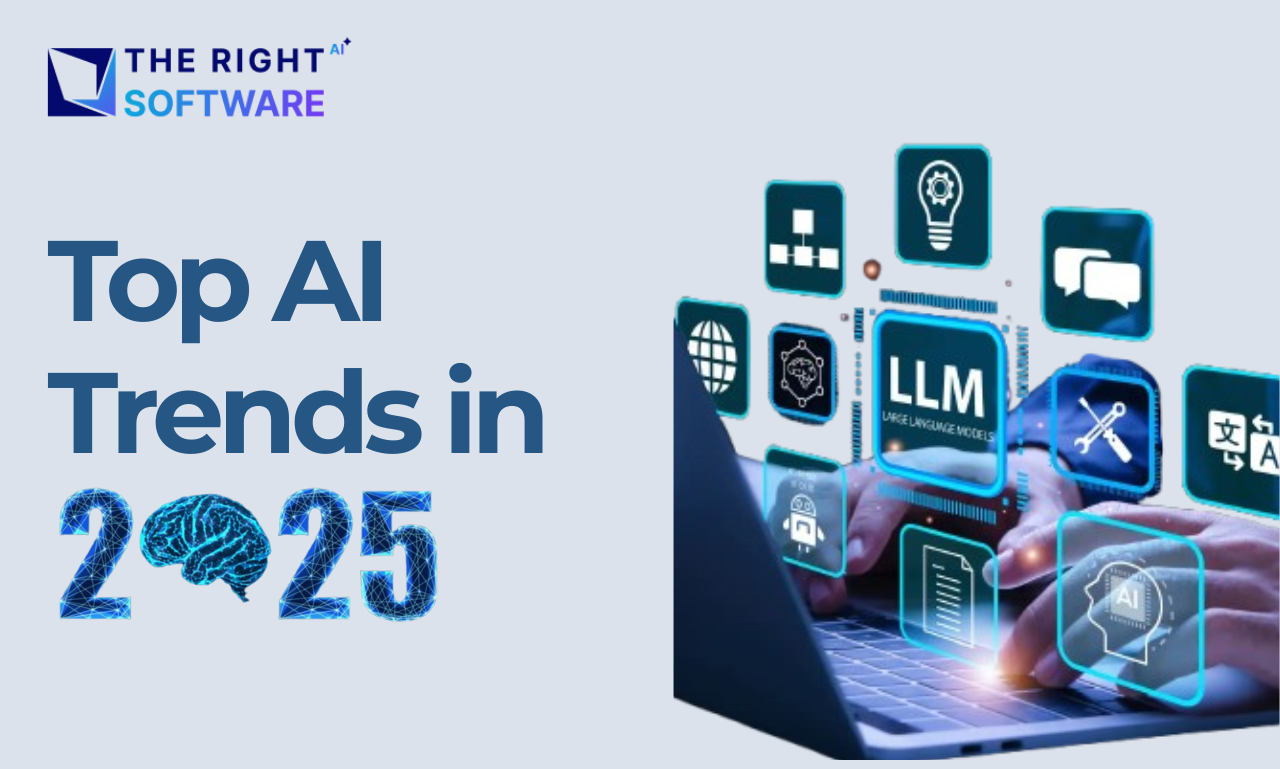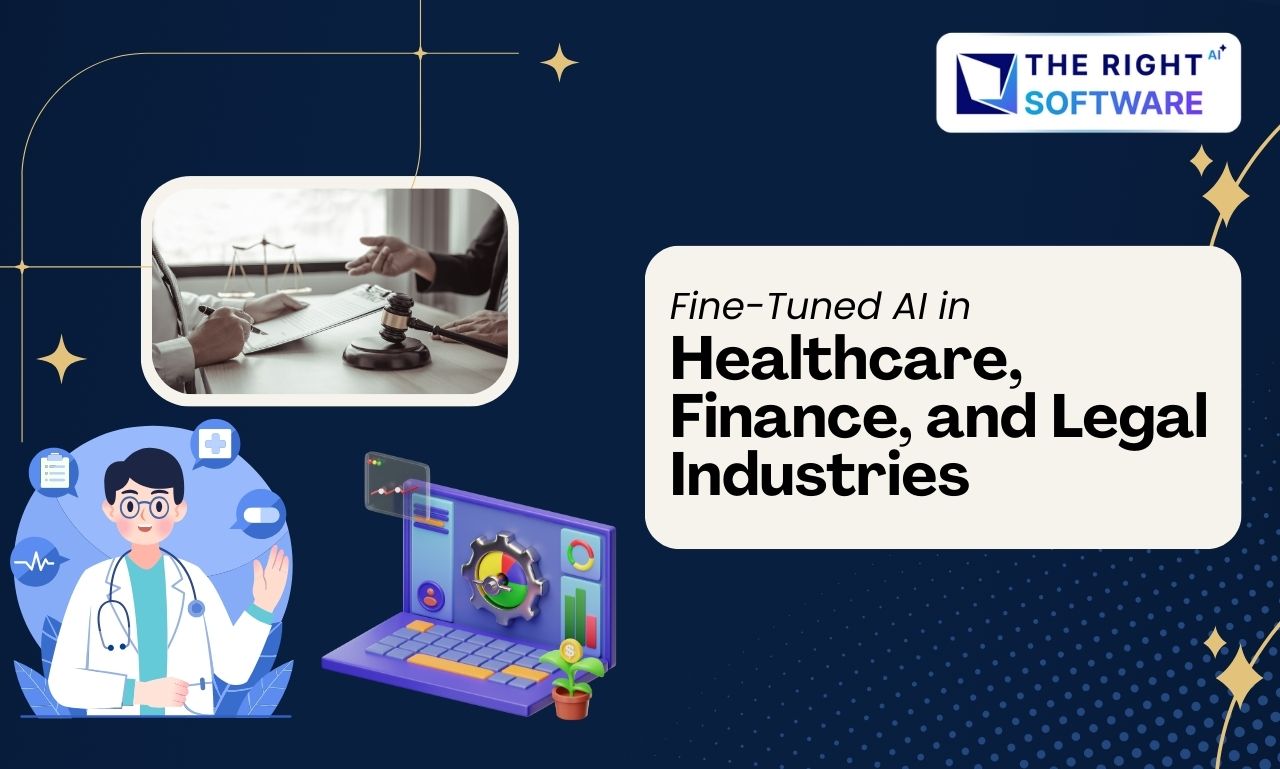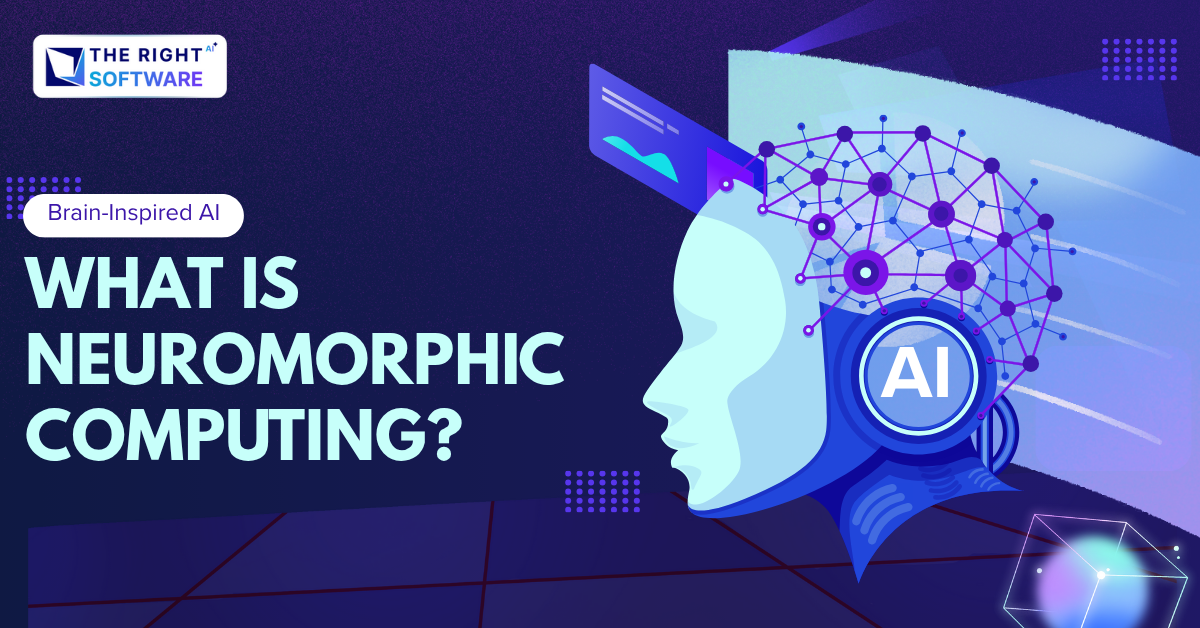Artificial Intelligence is no longer an innovation; it is the infrastructure of the digital world. As we move deeper into 2025, AI’s evolution has shifted from automation to augmentation—where humans and machines collaborate to create intelligence at scale. At the heart of this transformation stand Large Language Models (LLMs) such as GPT-4 and GPT-5, shaping the foundation for a smarter, more connected, and infinitely adaptive ecosystem.
AI is now a catalyst for reinvention—reshaping industries, redefining productivity, and reimagining the very nature of human creativity. According to recent global projections, by the end of 2025, over 80% of enterprises will have integrated AI-driven systems into their operations, and nearly 60% of software development processes will involve AI-assisted tools. This decade marks not just the rise of technology but the dawn of intelligence that learns, reasons, and collaborates.
In this thought-leadership piece, we explore the Top 10 AI Trends in 2025 and how LLMs are leading the charge toward a more intelligent, ethical, and autonomous future.
1. LLMs as the Core of Cognitive Infrastructure
function ai_cognitive_response() {
$insight = "LLMs are the brain of automation — learning, reasoning, and adapting.";
return "<div class='ai-box'>$insight</div>";
}
add_shortcode('ai_response', 'ai_cognitive_response');
LLMs have evolved beyond conversation—they’ve become the cognitive layer powering modern enterprise. With GPT-5 and other frontier models, organizations now rely on LLMs for reasoning, decision-making, and adaptive learning. These systems can interpret unstructured data, write clean code, summarize complex reports, and generate strategic insights in seconds.
Businesses no longer view them as tools but as collaborative cognitive partners that enhance human potential. At The Right Software, developers integrate LLM APIs to create solutions that learn and evolve alongside user needs—bridging the gap between automation and intelligence.
2. Autonomous Agents and Self-Learning Systems
2025 introduces a world of autonomous AI agents capable of performing complex tasks without step-by-step supervision. These agents leverage machine learning and reinforcement learning to adapt dynamically—managing workflows, analyzing user patterns, and optimizing processes in real time.
For instance, imagine a virtual operations assistant that not only schedules meetings but also predicts when your project pipeline will need more resources. That’s the essence of autonomous AI—anticipating needs before they arise.
Businesses that adopt such self-learning systems will reduce operational friction and achieve speed, consistency, and accuracy on an entirely new level.
3. The Rise of AI-Augmented Development
In software engineering, AI-assisted coding has become the new normal. Developers are no longer limited by syntax or manual debugging; instead, they collaborate with AI copilots that understand context and propose solutions. AI tools like GitHub Copilot and AI-driven testing suites have already cut development cycles by nearly 40%, enabling teams to focus on innovation rather than repetition.
At The Right Software, this augmentation means projects scale faster and deliver higher-quality results, supported by predictive analytics and AI-driven automation that ensures every product iteration is smarter than the last.
4. Generative Design and Intelligent Creativity
In 2025, creativity is algorithmic. AI doesn’t just assist designers—it co-creates. Through Generative AI and LLMs, design workflows now include systems that visualize user intent, generate adaptive UI/UX layouts, and write design-driven code in real time.
The boundary between design and development is dissolving. Imagine a designer describing a digital experience in natural language, and the AI instantly generating interactive prototypes. That’s the convergence of art, language, and logic, powered by Large Language Models that understand context and intent at human depth and machine speed.
from openai import OpenAI
client = OpenAI(api_key="YOUR_API_KEY")
prompt = """
Generate 3 creative UI design concepts for a futuristic AI dashboard.
Return them as short descriptions.
"""
response = client.chat.completions.create(
model="gpt-5",
messages=[{"role": "user", "content": prompt}],
temperature=0.8
)
print("AI-Generated Design Ideas:")
print(response.choices[0].message.content)
Generative Design and Intelligent Creativity — Python Example
5. Machine Learning in Continuous Automation
Automation is evolving into self-optimization. Traditional automation followed static rules; modern machine learning systems now interpret data, learn from it, and adjust processes autonomously.
From manufacturing to marketing, AI-driven automation allows continuous improvement. For example, adaptive supply chains can forecast demand shifts, optimize logistics routes, and even negotiate pricing autonomously through AI software that understands business goals.
This continuous automation not only improves efficiency but also liberates human intelligence to focus on creativity and innovation—the true capital of the digital age.
6. Ethical and Transparent AI Governance
As AI becomes omnipresent, trust becomes its currency. The call for explainable AI (XAI) and ethical frameworks is louder than ever. Users and regulators demand transparency—understanding how AI makes decisions and ensuring that bias is systematically eliminated.
In 2025, leading enterprises are embedding AI ethics layers into their models—monitoring fairness, inclusivity, and accountability. This evolution ensures that AI systems don’t just operate intelligently but responsibly.
For tech partners like The Right Software, integrating ethical design principles into AI development ensures every intelligent solution aligns with human values and societal progress.
Regional & Pakistan-Specific AI / LLM / GenAI Statistics
| Context | Stat / Source |
|---|---|
| Pakistan general sentiment & adoption | In a survey by Ipsos (Feb–Apr 2024) among ~50,000 people across 50 countries, 69% of Pakistanis believed that advanced technology like AI would create more jobs than destroy them. BOL News |
| Pakistan global AI tool usage ranking | Pakistan ranked 4th globally among 21 countries in a Schwartz Reisman Institute survey for utilising AI tools and applications. The Express Tribune |
| Awareness vs use in Pakistan (Generative AI) | In Pakistan, only 4% of internet users were aware of Generative AI (GenAI) in a survey (Mar 2024), and about 3% actively used it. Meanwhile, general AI awareness was about 35%. AI News Monitor |
| Pakistan healthcare sector adoption issues | Among healthcare practitioners surveyed (321 professionals) in Pakistan, many see AI as valuable but adoption is weak. For example, 24.5% said it greatly improves diagnostic accuracy; many reported low usage in treatment planning. Thejas Journal |
| APAC / Southeast Asia adoption | ~72% of organizations in the Asia-Pacific (APAC) region have adopted AI; 67% have used GenAI solutions. Statista |
| Transformative AI adoption in Southeast Asia (SEA) | Only 23% of companies in SEA are “transformative” in their AI adoption — i.e., using AI strategically to transform business models and customer experience. SAS |
| Skills & governance challenges in SEA | In SEA, fewer than two-thirds of organizations believe their employees have the skills to use AI responsibly; in Singapore, the figure is only ~50%. Deloitte |
The global AI software market is projected to surpass $300 billion by 2025, illustrating how deeply automation has become embedded across industries — from healthcare diagnostics to predictive analytics in finance
7. Multimodal AI: The Next Frontier
While LLMs handle language, the next phase is multimodal intelligence—AI systems that can understand text, images, audio, and video simultaneously. GPT-5 and its successors are now capable of visual reasoning, enabling machines to interpret complex media and generate insights from multidimensional data streams.
This trend transforms industries like healthcare (diagnosing through images and reports), e-commerce (product tagging via vision + language), and security (real-time situational analysis).
Multimodal AI is more than a feature—it’s the gateway to truly context-aware intelligence, where understanding transcends language barriers.
8. AI in Decision Intelligence and Predictive Strategy
Decision-making has entered a new age—one where AI forecasts outcomes before humans decide. Through predictive analytics and decision intelligence frameworks, AI systems can simulate multiple business scenarios, test strategies, and provide recommendations based on data-driven probabilities.
By 2025, over 70% of executive decisions will be informed or validated by AI systems. This marks a shift from intuition-led to intelligence-led strategy. Companies that adapt will see better foresight, reduced risk, and accelerated growth—turning uncertainty into opportunity.
9. Human-AI Collaboration: The Hybrid Workforce
The narrative of “AI replacing humans” is giving way to AI empowering humans. The most successful organizations of 2025 are hybrid ecosystems—where AI manages complexity, and humans drive creativity and empathy.
This synergy enhances productivity across every domain. AI analyzes; humans decide. AI automates; humans innovate. The result is not replacement but reinvention—a new model of work defined by augmented intelligence.
At The Right Software, this philosophy drives our approach to building AI-integrated development teams—engineers who collaborate with intelligent systems to deliver solutions that evolve continuously.
10. The Democratization of AI Tools and Platforms
Once confined to research labs and tech giants, AI tools are now accessible to startups, educators, and entrepreneurs alike. The rise of open-source models and cloud-based AI software has democratized access to innovation.
Low-code and no-code AI platforms empower non-technical users to build predictive models, automate workflows, and launch AI-driven applications without writing a single line of code. This democratization fuels innovation at every scale—making AI a shared resource rather than an elite advantage.
In 2025, AI literacy will become as essential as digital literacy once was—a skill every professional and business must master to remain relevant.
The Future of AI: Beyond Intelligence
The trajectory of AI in 2025 and beyond isn’t just about smarter machines—it’s about more symbiotic intelligence. As LLMs, machine learning, and automation converge, AI systems will increasingly act as digital collaborators—understanding context, intention, and emotion.
This evolution challenges organizations to rethink their digital strategies. The question is no longer “How can we use AI?” but “How can AI use us—to make the world more efficient, ethical, and extraordinary?”
The Right Software envisions a future where AI is seamlessly woven into every layer of development—from product ideation to deployment—creating software that doesn’t just function but thinks, adapts, and grows.
Pakistan-Specific AI / GenAI / LLM Statistics & Insights
| Stat | Details / Source |
|---|---|
| Pakistan ranks 4th globally in AI usage among 21 countries | Shows strong public adoption of AI tools and applications. Survey reports that Pakistanis hold largely positive views toward AI. TechJuice |
| General AI awareness vs generative AI awareness & use | ~35% of internet users in Pakistan are aware of “AI” in general; only ~4% are aware of Generative AI; ~3% actively use it. AI News Monitor |
| AI usage sentiment | In that 4th-rank survey, 26% view AI as very positive, 39% fairly positive, 22% neutral, remainder negative. The Express Tribune |
| Startups and local AI / LLM initiatives | Pakistani startup baseH built its own AI content generator (“Dante”) using NLP; there are also multiple AI-based startups in healthcare, agritech, logistics etc leveraging AI/ML with local data. Pakistan Technology News |
| Pakistan’s AI Policy / Developer Goals by 2030 | The country aims to train 1 million AI developers and launch 1,000 local AI products by 2030. Punjab E Taxi Scheme – NASCON |
| Investment in AI startups | In 2023, Pakistani startups raised US $75.8 million across 39 deals. In that same period, approx US $8.5 million went to AI-focused startups. LinkedIn |
| Scholar / Educator adoption | In K-12 schools, over two-thirds of educators are willing to adopt AI tools; about one-third already use AI tools frequently for tasks like lesson planning and content creation. arXiv |
LLMs like GPT-5 are estimated to contribute up to $15 trillion to the global economy by 2030, underscoring how deeply this technology will define the next decade of innovation and enterprise growth.
Conclusion: Leading the Charge with The Right Software
The world stands on the brink of a technological renaissance powered by AI and LLMs. 2025 is not just another year of innovation—it’s the year intelligence becomes infrastructure.
The Right Software continues to harness this momentum, building AI-driven systems that empower clients to scale intelligently and sustainably. Whether it’s integrating GPT-5 APIs, deploying machine learning automation, or engineering next-generation AI software, our goal remains constant—to make technology think for you.
Hire dedicated developers to build AI-driven software that leads—not follows—the future. Because in the era of intelligent evolution, leadership belongs to those who code with vision.





